Themed collection Neutron Scattering in Catalysis and Energy Materials

Neutron scattering in catalysis and energy materials
This themed collection focuses on the use of neutron scattering to interrogate catalysts and materials used in energy storage. Neutrons are a powerful and unique probe that allow characterisation of these experimentally challenging systems in multiple ways.
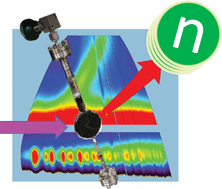
Phys. Chem. Chem. Phys., 2016,18, 17140-17140
https://doi.org/10.1039/C6CP90150F
Dynamics of H2 adsorbed in porous materials as revealed by computational analysis of inelastic neutron scattering spectra
This perspective article reviews the different types of quantum and classical mechanical methods that have been implemented to interpret the INS spectra for H2 adsorbed in porous materials.

Phys. Chem. Chem. Phys., 2016,18, 17141-17158
https://doi.org/10.1039/C6CP01863G
An in-depth understanding of the bimetallic effects and coked carbon species on an active bimetallic Ni(Co)/Al2O3 dry reforming catalyst
Aliphatic rather than aromatic carbonaceous species was identified to be the dominating coke on spent bimetallic Ni(Co)/Al2O3 which exhibited enhanced dry reforming performance.
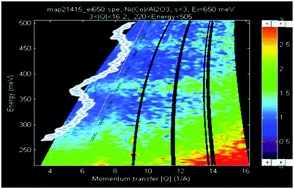
Phys. Chem. Chem. Phys., 2016,18, 17311-17319
https://doi.org/10.1039/C6CP01089J
Ammonia mobility in chabazite: insight into the diffusion component of the NH3-SCR process
To assess the effect of counterion presence on NH3 mobility in commercial automotive emission control zeolite catalysts, NH3 mobility in NH3-SCR catalyst Cu-CHA was compared with H-CHA using quasielastic neutron scattering and molecular dynamics simulations.
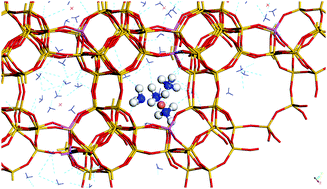
Phys. Chem. Chem. Phys., 2016,18, 17159-17168
https://doi.org/10.1039/C6CP01160H
Spectroscopic investigation into the design of solid–acid catalysts for the low temperature dehydration of ethanol
Combining in situ neutron scattering and vibrational spectroscopy studies to elucidate the mechanism of ethanol dehydration in SAPO-34 catalysts.
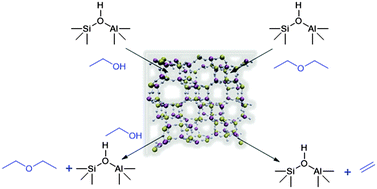
Phys. Chem. Chem. Phys., 2016,18, 17303-17310
https://doi.org/10.1039/C6CP01209D
Methanol diffusion in zeolite HY: a combined quasielastic neutron scattering and molecular dynamics simulation study
The diffusion of methanol in zeolite HY is studied using tandem quasielastic neutron scattering (QENS) experiments and molecular dynamics (MD) simulations at 300–400 K.

Phys. Chem. Chem. Phys., 2016,18, 17294-17302
https://doi.org/10.1039/C6CP01151A
The application of inelastic neutron scattering to investigate the interaction of methyl propanoate with silica
IR, INS, DFT, XRD and TPD are used to deduce how methyl propanoate interacts with a silica surface.
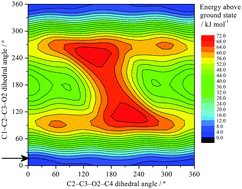
Phys. Chem. Chem. Phys., 2016,18, 17210-17216
https://doi.org/10.1039/C6CP01276K
Hydrogen adsorption on two catalysts for the ortho- to parahydrogen conversion: Cr-doped silica and ferric oxide gel
Interaction of molecular hydrogen with the surface of the ortho–para conversion catalyst.
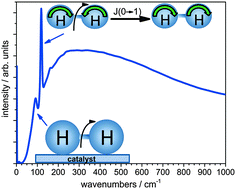
Phys. Chem. Chem. Phys., 2016,18, 17281-17293
https://doi.org/10.1039/C6CP01154C
Different routes to methanol: inelastic neutron scattering spectroscopy of adsorbates on supported copper catalysts
Inelastic neutron scattering of Cu-based methanol synthesis catalysts revealed that the surface coverage after reaction depends on the support oxide.
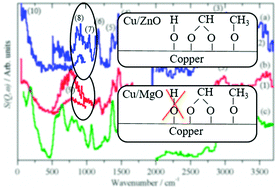
Phys. Chem. Chem. Phys., 2016,18, 17253-17258
https://doi.org/10.1039/C6CP00967K
Looking inside the pores of a MCM-41 based Mo heterogeneous styrene oxidation catalyst: an inelastic neutron scattering study
Inelastic neutron scattering was used to study the adsorbed species at a catalyst's surface and assess product selectivity and confirm a mechanistic proposal.
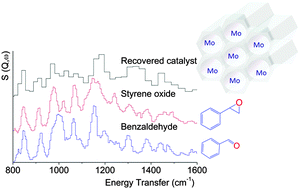
Phys. Chem. Chem. Phys., 2016,18, 17272-17280
https://doi.org/10.1039/C6CP01243D
Heads or tails: how do chemically substituted fullerenes melt?
The melting of the substituted fullerene PCBM is driven by the tail, not the head.

Phys. Chem. Chem. Phys., 2016,18, 17202-17209
https://doi.org/10.1039/C6CP01333C
An INS study of entrapped organic cations within the micropores of zeolite RTH
INS experiments and DFT calculations allow identifying rotational constraints of organic molecules occluded in zeolite micropores.
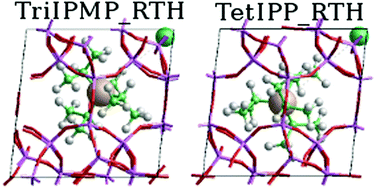
Phys. Chem. Chem. Phys., 2016,18, 17244-17252
https://doi.org/10.1039/C6CP00971A
The adsorbed state of a thiol on palladium nanoparticles
Imaging, spectroscopy and computation show that 1-dodecanethiol forms largely ordered 1-dodecanethiolate on the surface of palladium nanoparticles.

Phys. Chem. Chem. Phys., 2016,18, 17265-17271
https://doi.org/10.1039/C6CP00957C
An investigation of the effect of carbon support on ruthenium/carbon catalysts for lactic acid and butanone hydrogenation
A series of ruthenium catalysts supported on two different carbons were tested for the hydrogenation of lactic acid to 1,2-propanediol and butanone to 2-butanol.
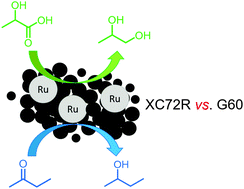
Phys. Chem. Chem. Phys., 2016,18, 17259-17264
https://doi.org/10.1039/C6CP01311B
Determination of toluene hydrogenation kinetics with neutron diffraction
Total neutron scattering has been used to follow the hydrogenation of toluene-d8 to methylcyclohexane-d14 over 3 wt% platinum supported on highly ordered mesoporous silica (MCM-41) at 298 K and under 150–250 mbar D2 pressure.
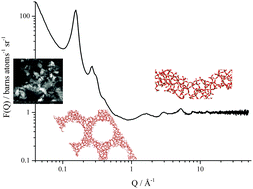
Phys. Chem. Chem. Phys., 2016,18, 17237-17243
https://doi.org/10.1039/C6CP01494A
Characterisation of the surface of freshly prepared precious metal catalysts
Freshly prepared precious metal catalysts have been investigated by electron microscopy, X-ray and neutron spectroscopies and computational methods. At least half the surface is metallic with the remainder covered by oxygen, largely as hydroxide.
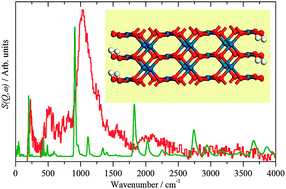
Phys. Chem. Chem. Phys., 2016,18, 17196-17201
https://doi.org/10.1039/C6CP01027J
Crystallographic origin of cycle decay of the high-voltage LiNi0.5Mn1.5O4 spinel lithium-ion battery electrode
Crystallographic structural study of the capacity decay of the LiNi0.5Mn1.5O4||Li4Ti5O12 18650-type battery using operando neutron powder diffraction.
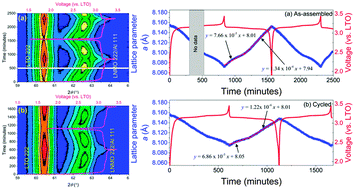
Phys. Chem. Chem. Phys., 2016,18, 17183-17189
https://doi.org/10.1039/C6CP00947F
Observation of single-file diffusion in a MOF
Quasi-elastic neutron scattering allows us to observe single-file diffusion of neopentane in MIL-47(V).
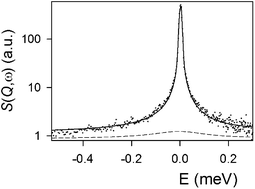
Phys. Chem. Chem. Phys., 2016,18, 17190-17195
https://doi.org/10.1039/C6CP00410E
Dissolved chloride markedly changes the nanostructure of the protic ionic liquids propylammonium and ethanolammonium nitrate
The bulk nanostructure of 15 mol% propylammonium chloride (PACl) dissolved in propylammonium nitrate (PAN) and 15 mol% ethanolammonium chloride (EtACl) in ethanolammonium nitrate (EtAN) has been determined using neutron diffraction with empirical potential structure refinement fits.
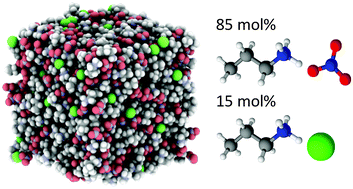
Phys. Chem. Chem. Phys., 2016,18, 17169-17182
https://doi.org/10.1039/C5CP06947E
Bulk nanostructure of the prototypical ‘good’ and ‘poor’ solvate ionic liquids [Li(G4)][TFSI] and [Li(G4)][NO3]
The bulk nanostructures of a prototypical ‘good’ solvate ionic liquid (SIL) and ‘poor’ SIL have been examined using neutron diffraction and empirical potential structure refinement (EPSR) simulated fits.
![Graphical abstract: Bulk nanostructure of the prototypical ‘good’ and ‘poor’ solvate ionic liquids [Li(G4)][TFSI] and [Li(G4)][NO3]](/en/Image/Get?imageInfo.ImageType=GA&imageInfo.ImageIdentifier.ManuscriptID=C6CP00176A&imageInfo.ImageIdentifier.Year=2016)
Phys. Chem. Chem. Phys., 2016,18, 17224-17236
https://doi.org/10.1039/C6CP00176A
Water distribution in a sorption enhanced methanation reactor by time resolved neutron imaging
The peculiar macroscopic water distribution is the origin of high conversion yields in sorption enhanced methanation reactors.
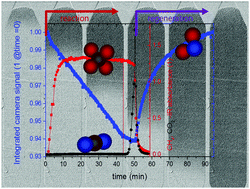
Phys. Chem. Chem. Phys., 2016,18, 17217-17223
https://doi.org/10.1039/C5CP07686B
About this collection
This themed issue focuses on the use of neutron scattering to interrogate catalysts and materials used in energy storage. These materials are often difficult to characterise and the use of neutron scattering in these fields provide valuable information to improve fundamental understanding. This themed issue is guest-edited by Richard Catlow (University College London), Stewart Parker and Ian Silverwood (ISIS Neutron and Muon Facility, STFC).